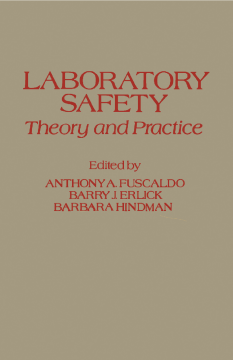
Additional Information
Book Details
Abstract
Laboratory Safety: Theory and Practice focuses on theoretical aspects of the hazards the students, technicians, and scientists encounter in the laboratory. It presents methods of risk assessment that can be applied to technologies as they are translated from the scientist’s mind to the laboratory bench. It is organized into three sections designated as General Laboratory Safety, Biological Laboratory Safety, and Medical and Psychological Factors.
The first section, encompassing three chapters, discusses hazards found in almost all laboratories; pertinent safety theories and practices; ubiquitous compounds that are either toxic or carcinogenic and guidelines for their use; and radiation hazards. Chapters 4 to 7 focus on the safety in the biological laboratory. Discussions on relatively complex group of viruses, approach to recombinant DNA research, and awareness on the possible hazards associated with the field are included in this book. Chapters 6 and 7 present design and function of biohazard laboratories and the hazards relating to laboratory animals. The final section discusses medical surveillance of persons at risk and the psychological factors involved in accident control. It presents a comprehensive list of chemical agents, their sources, subsequent physical effects, and the accepted mode of medical surveillance. Various genetic screening tests and their potential use for the evaluation of presumptive and actual mutagens are also covered.
This book is ideal for safety and design engineers, students, technicians, and scientists.
